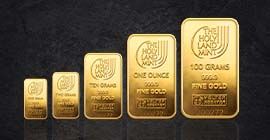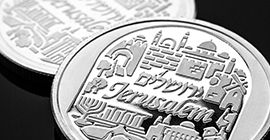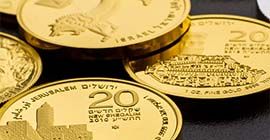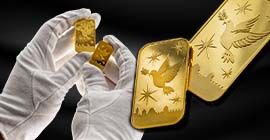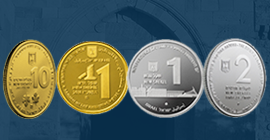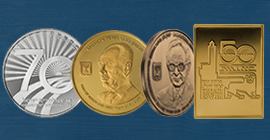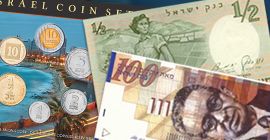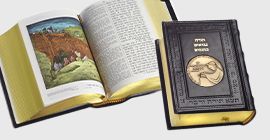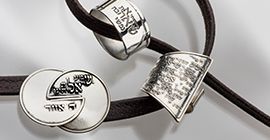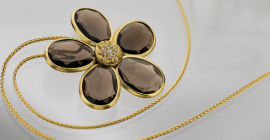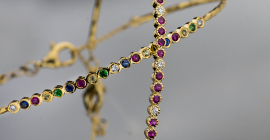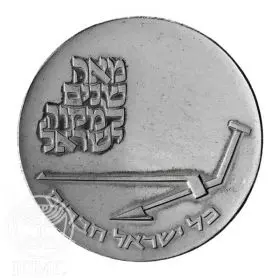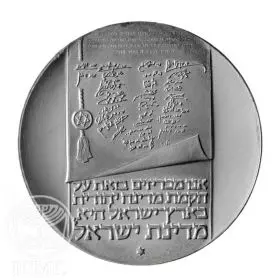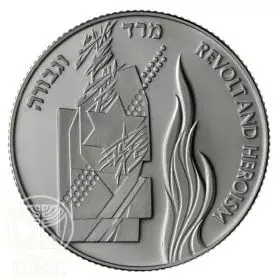Tel Hazor
Silver 999, Proof, 38.7 mm, 1 oz
SKU
21978380
In stock
$189.00
Specifications
| Issuing Year | 2014 |
|---|---|
| Material | Silver |
| Fineness | 999 |
| Quality | Proof |
| Weight | 1 oz. |
| Diameter | 38.7 mm |
| Face Value | 2 NIS |
| Max Mintage | 800 |
| Mint Mark | Mem ("מ") |
| Design | Gideon Sagi, Eitan Hendel |
Fifth in the "UNESCO World Heritage Sites in Israel" Coin Series of the Bank of Israel
Situated north of the Sea of Galilee, Tel Hazor is the largest biblical-era archaeological site in Israel. Like Tel Megiddo featured on the previous coin in this series, Tel Hazor is a an archaeological mound, a testimony to the Canaanite cities of the Bronze Age and the Biblical cities of the Iron Age, that had impressive levels of town planning, architecture, fortifications and water collection technologies. The City of Hazor was built on fertile soil and strategically located on an important trade route running from Egypt in the South to Mesopotamia in the north.
The upper city of Hazor, known as the "Acropolis", was the first area to be settled in the third millennium BCE in Canaanite times, early Bronze Age, while the lower city (the fortified enclosure) was settled around the 18th century BCE. Canaanite Hazor, which appears to have been one of the largest, strongest and most central cities of the time, was destroyed by the Israelites under the leadership of Joshua (Joshua Chap. 11). The city was rebuilt and fortified by King Solomon (1 Kings 9) in the tenth century BCE. It prospered in the days of Ahab and Jeroboam II in the ninth and eighth centuries BCE, but was finally destroyed by the Assyrians (2 Kings 15) in 732 BCE.
Archaeological excavations at Tel Hazor have revealed remains dating from the Bronze Age – sanctuaries, fortresses, palace, orthostats (stone slabs set at the base of a wall), basalt sculptures and plates with Hieroglyphic inscriptions. Remains of the Israelite period include a high cultic place, a six-chambered gate and casemate wall from the time of King Solomon, similar to those discovered at Megiddo. A solid wall fortification and buildings, including a store house, thought to date from the time of King Ahab, have been found. In addition, a sophisticated water system, very similar to the system found at Tel Megiddo, has been revealed.
Representing an interchange of human values throughout the ancient near-east and being a testimony to an ancient civilization with a high level of engineering and technology, Tel Hazor was recognized by UNESCO as a World Heritage Site, in 2005.
The coin reverse presents remains of the Canaanite and Israelite periods.
From the Canaanite period, a basalt Lion orthostat, found near the sanctuary, one of two that flanked the entrance to the Canaanite palace or fortress. From the Israelite period is the ninth century BCE Royal Fortress Gate of Tel Hazor. The Gate has two Ionic columns on either side, each with decorative proto-aeolic capitals, characterized by their spiral motifs that are a feature in classical architecture.
On the coin obverse, beneath the face value appears a representation of a tenth century BCE incense altar that was in use in the Israelite period.
Design:
Obverse - Gideon Sagi
Reverse - Eitan Hendel
Coin Description
Obverse: Face Value, Israel State Emblem, "Israel" in English, Hebrew and Arabic, Mint Year and Mint Mark, a tenth century BCE incense altar from the early Israelite period in Tel Hazor
Reverse: UNESCO and World Heritage Sites Emblems. Major archaeological findings at Tel Hazor: basalt lion orthostat from the Canaanite period, late Bronze Age, Royal fortress gate from the Israelite period, border inscription "Tel Hazor" in English, Hebrew and Arabic.
Mint: THE HOLY LAND MINT
Issue Name: Tel Hazor
Series Name: UNESCO World Heritage sites
| Catalog SKU | Condition | Diameter | Face Value | Issue Price | Material | Mint Mark | Quantity | Weight |
|---|---|---|---|---|---|---|---|---|
| 31978300 | 30 mm | 10 NIS | 4792 NIS | Gold 916, Proof | mem | 200 | 16.96 gr | |
| 21978380 | 38.7 mm | 2 NIS | 390 NIS | Silver 999, Proof | mem | 800 | 1 oz. | |
| 21978300 | 30 mm | 1 NIS | 245 NIS | Silver 925, Prooflike | star of david | 600 | 14.4 gr |

